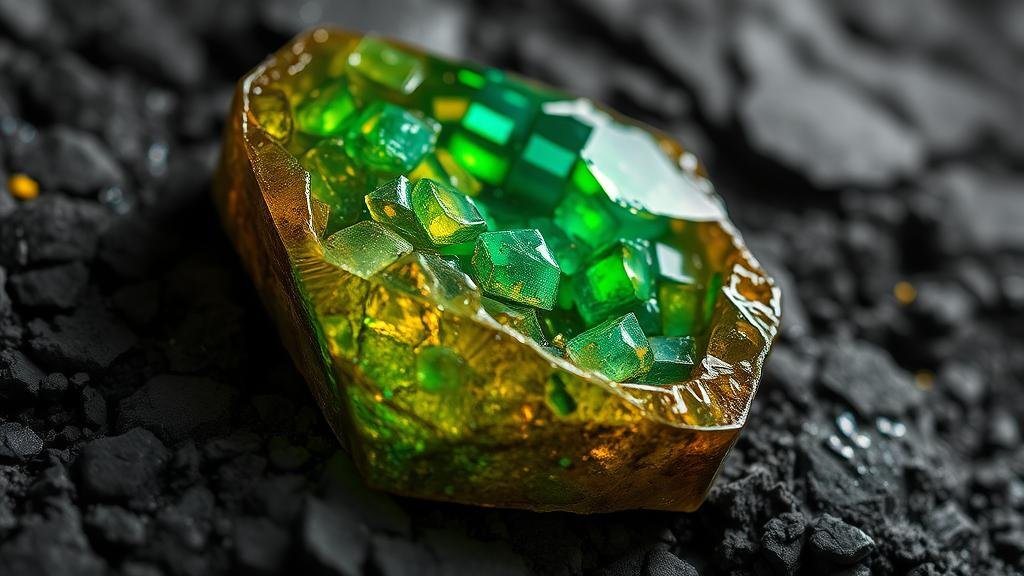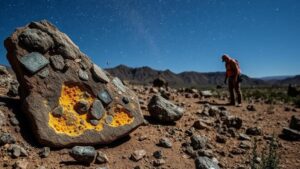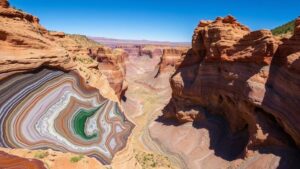Tektite Trails: Discovering Cosmic Glass in Earth’s Hidden Impact Fields
Tektite Trails: Discovering Cosmic Glass in Earth’s Hidden Impact Fields
Tektites are a fascinating type of natural glass formed from terrestrial debris that has been ejected during meteorite impacts. For rockhounds and mineral collectors, these cosmic artifacts offer an exciting opportunity to explore Earths impact fields while expanding their collections. This article delves into the science behind tektites, where to find them, and practical considerations for aspiring collectors.
What Are Tektites?
Tektites are typically formed from silicate materials that get vaporized during the intense heat and pressure of a meteorite impact. When these materials cool rapidly, they solidify into glassy fragments that can be found in various forms and sizes. Tektites can range from a few millimeters to several centimeters in diameter, with weights varying from less than a gram to over a hundred grams.
There are several well-known types of tektites, including:
- Libyan Desert Glass: Found primarily in Egypt, this golden-yellow glass is amongst the oldest tektites, dating back approximately 29 million years.
- Indochinites: This group is primarily found in Southeast Asia, characterized by their dark color and unique shapes. They are estimated to be around 800,000 years old.
- Australites: Originating from southeastern Australia, Australites are distinct for their elongated shapes and were created around 850,000 years ago.
The Science of Tektite Formation
Scientific studies suggest that the formation of tektites occurs within minutes of a meteorite impact. immense energy generated during such events can heat the surface materials to over 1,500°C (2,732°F), turning rock into molten glass. When this glass is expelled into the atmosphere, it cools and solidifies as it settles back to Earth. For example, during the Barringer Crater impact in Arizona, scientists estimate that over 30 tons of material were ejected, resulting in significant tektite deposits.
Where to Find Tektites
For rockhounds eager to find tektites, certain geographic regions are particularly fruitful. key locations include:
- Oriental Tektite Field: Spanning across parts of Southeast Asia, this region is rich with Indochinites.
- Libyan Desert: The vast sands of the Sahara host substantial deposits of Libyan Desert Glass.
- Australia: The southeastern part of the continent is known for Australites, particularly in Victoria and southern New South Wales.
Practical Tips for Collectors
Collecting tektites can be an exhilarating adventure. Here are some tips that may enhance your experience:
- Research Local Laws: Before heading out, consult local regulations regarding rock and mineral collection to ensure compliance.
- Invest in Quality Tools: A strong flashlight can help spot the often glassy surfaces of tektites, while tools like GPS devices can assist in mapping productive locations.
- Learn Identification Techniques: Familiarize yourself with the physical characteristics of tektites versus other types of glass or rocks. Tektites generally exhibit a smooth, glassy surface and often have distinctive shapes.
- Network with Other Collectors: Joining rockhound clubs or online forums can provide valuable insights and tips on local sites and collecting methods.
Real-World Applications
Beyond the thrill of collecting, tektites hold significant value in scientific research. r unique composition can provide insights into the conditions of impact events and the Earth’s geological history. In fact, studies of tektites can reveal details about past climate conditions, ochratoxin production, and even help in understanding the solar systems formation.
Conclusion
Discovering tektites offers a unique blend of adventure, science, and artistry for collectors. The thrill of searching the Earth’s hidden impact fields, combined with the potential for adding distinctive pieces to a collection, makes this pursuit extraordinarily rewarding. Whether youre a seasoned mineral collector or a novice rockhound, the universe awaits your exploration in the search for these enigmatic cosmic glass treasures.



